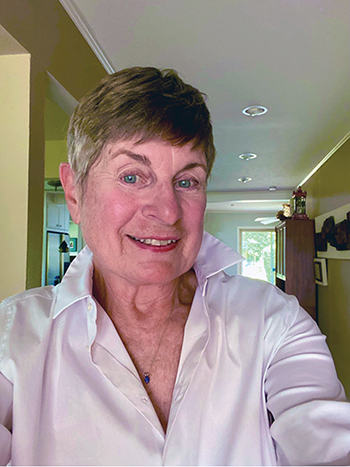Myelofibrosis Survivor
Clinical trials and support were instrumental in survivor's success

First diagnosed with essential thrombocythemia (ET) more than 20 years ago, Andrea Spica did not have many treatment options available. When the ET progressed to myelofibrosis, she participated in multiple clinical trials, which offered her several years free of symptoms before undergoing a stem cell transplant. She encourages others to consider clinical trials, keep an open mind and find support.
During a routine physical, blood test results showed my platelet count was high. My primary care doctor referred me to a hematologist who diagnosed the cause as essential thrombocythemia (ET). Treatment started with a chemotherapy drug, but I only took it for a couple months because I couldn’t handle the side effects. The hematologist switched me to a platelet-reducing drug, and luckily I had no side effects with it. I went on with my life.
After taking this therapy for 10 years, symptoms gradually began to develop. It wasn’t until I was on a bike ride vacation with some friends for my 60th birthday that I realized something was wrong. I was very tired and couldn’t keep up with them. This was unusual because I was an avid cyclist and could normally ride 150 miles a week. A good friend pulled me aside and asked why I was not keeping up. Her awareness helped me recognize that something more was going on with my health.
I went back to the hematologist, who suspected my condition had progressed beyond ET. He referred me to a well-known cancer center where I had a bone marrow biopsy that confirmed the progression to myelofibrosis. Few treatment options were available at the time, so the doctor suggested a clinical trial, and over time I tried a variety of them. Some worked better than others. I wouldn’t be here today if I had not explored clinical trials. They are the only way to advance new treatments and potentially help yourself and others.
Whether I was in a clinical trial or not, I continued searching for other options. I read everything about myelofibrosis I could get my hands on, including medical journals. Through my research, I read about a new JAK1 and JAK2 inhibitor drug being tested in a clinical trial that was shown to increase red blood cells. I presented this information to my doctor. He admitted he didn’t know much about it, but he discovered I could qualify to get into the trial. I enrolled in it and had several really good years with that therapy. But, over time, it started to fail, which was expected. My red blood cells decreased, and I had to have blood transfusions every three weeks. By this time, I had run out of all options but one: a stem cell transplant.
This was a very difficult decision because the success rate at the time was low (it’s much better today). I was concerned I would become ineligible for a transplant as I aged, so I decided to go for it. My sister donated her stem cells.
The process was rough, but I hung in there and the transplant was a success. If you consider this procedure, make sure you find a caretaker willing to help you for three to six months. Also, keeping a good attitude is so important during this time.
Friends and family may struggle with the idea that you have cancer because “you don’t look sick.” That is why it is important to find a good support group. Talking with others who have myelofibrosis is helpful because they can truly understand what you are going through. I found an in-person meeting through word of mouth. Once I went, I knew I was no longer alone.
After attending the support group meetings for nearly a year, the leader asked if I would take over the group. I agreed and ran the group for several years. Once I had my transplant, I passed the leadership to another person but I keep up with online meetings. I’m also a member of a bone marrow transplant support group. Today, I’m considered in remission.
Finding support for a rare cancer is especially important. As a result of COVID-19, many support groups are now accessible online across the country. You can find these online meetings through www.mpninfo.org. There is hope, and there is support.
Andrea's Advice
• Be an advocate for your own care.
• Keep a good attitude.
• Find people to talk to, and get into a good support group.
• Movement is medicine.
• Do your research.
• If you are considering a transplant, interview the hospitals, doctors and support staff that may be involved. Ensure they have a high success rate for transplants in myelofibrosis patients, not just an overall success rate.
• Don’t pick a hospital for a transplant just because it’s the closest to you.
• Expect to need multiple treatments over time to manage the disease.
• Don’t give up. Myelofibrosis is not a death sentence.


